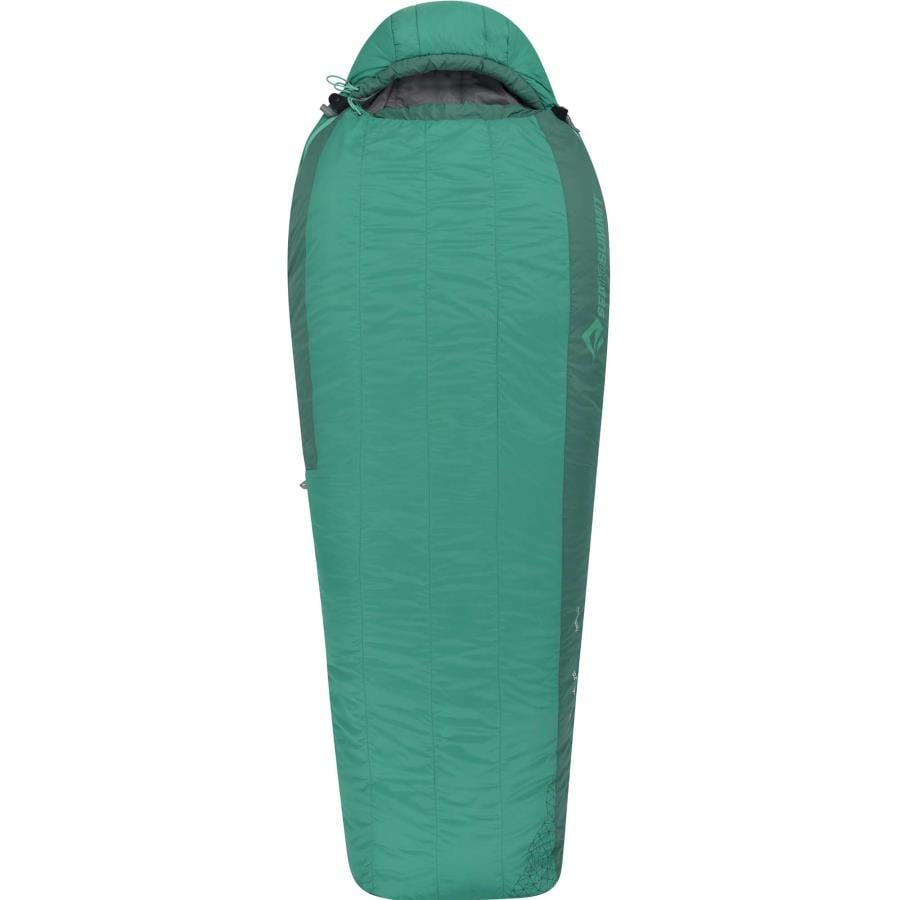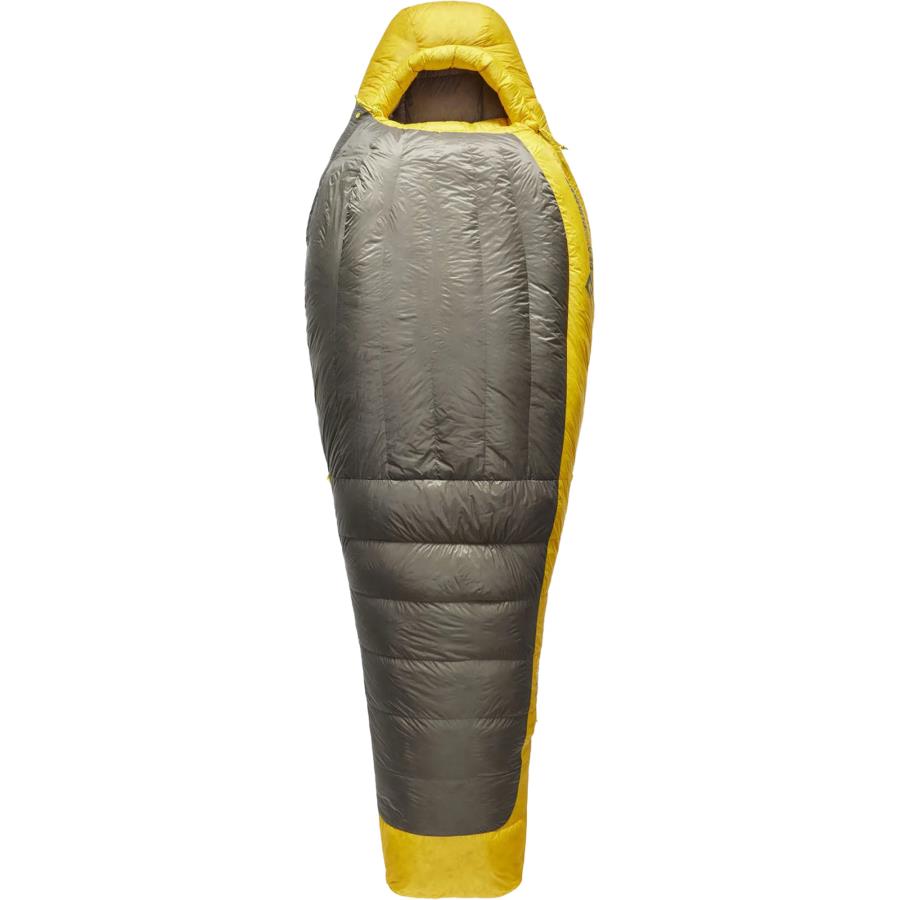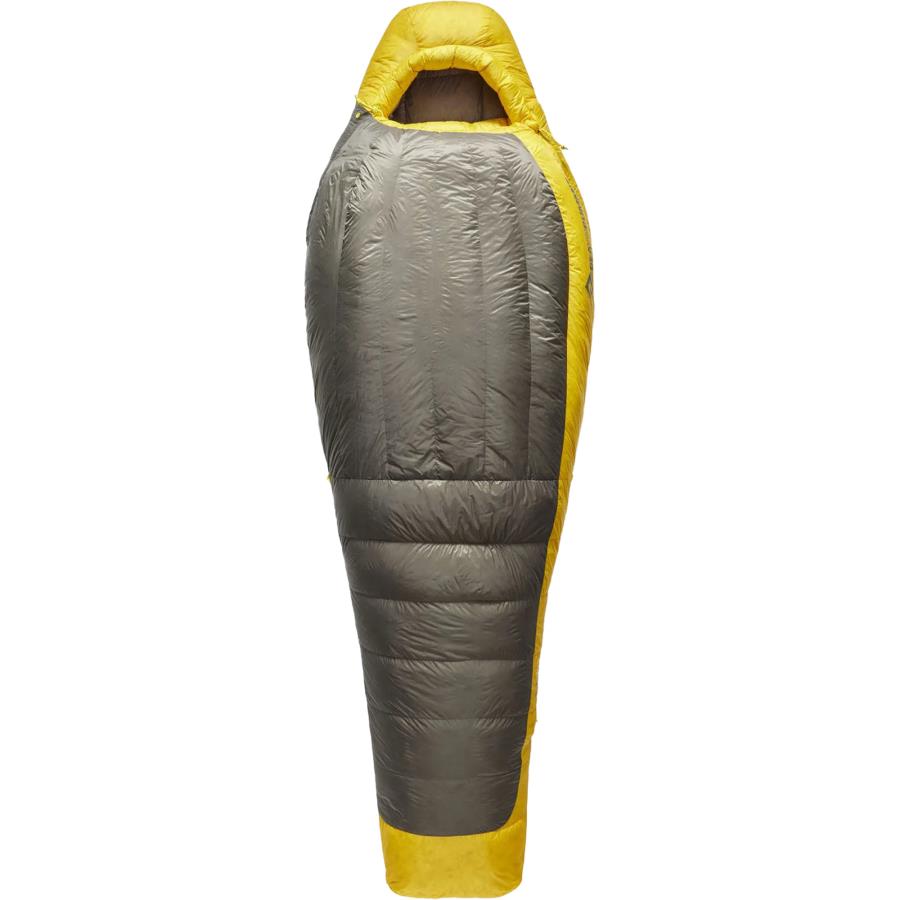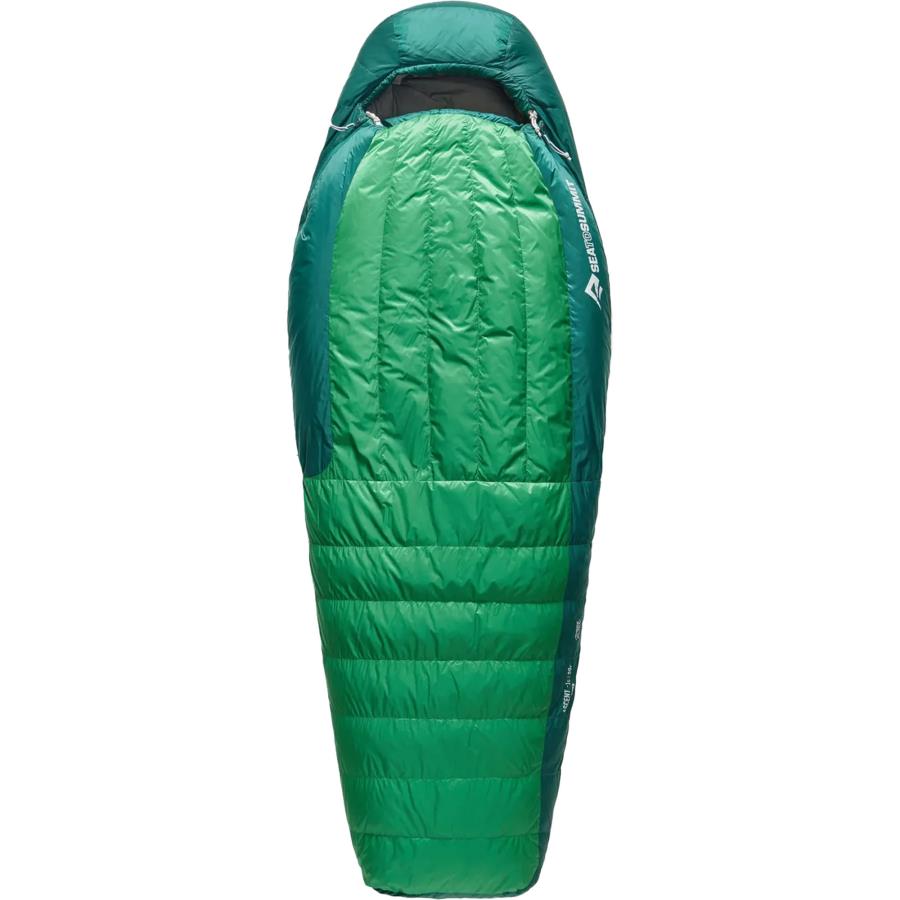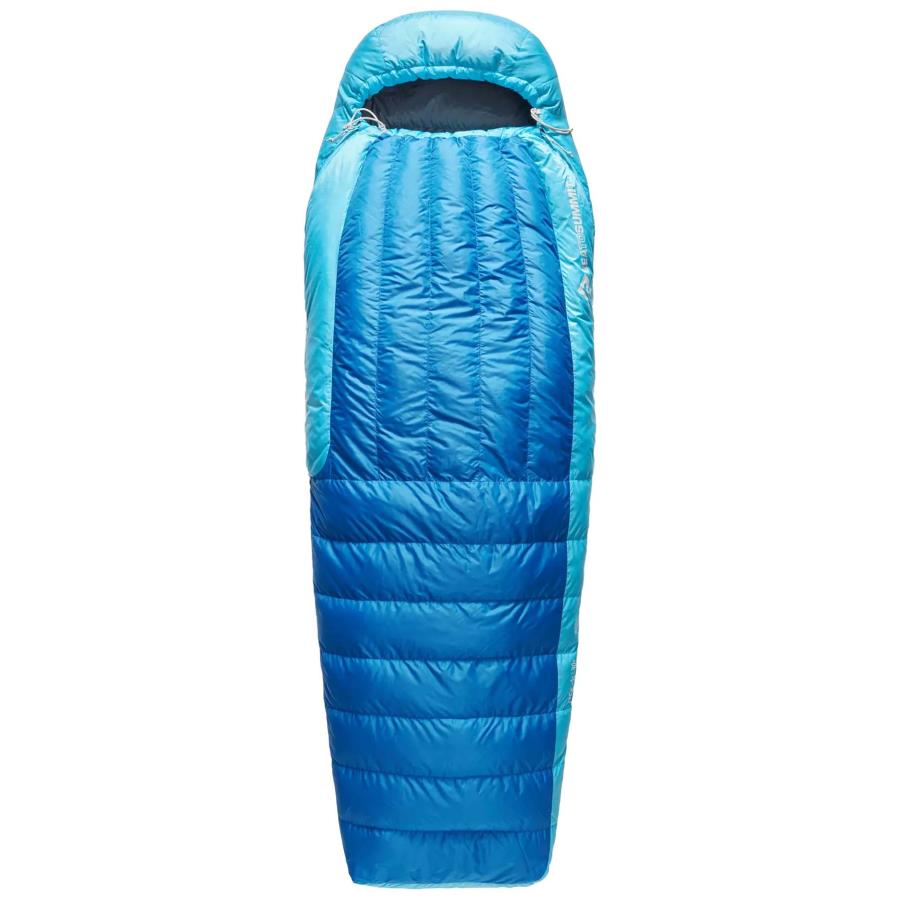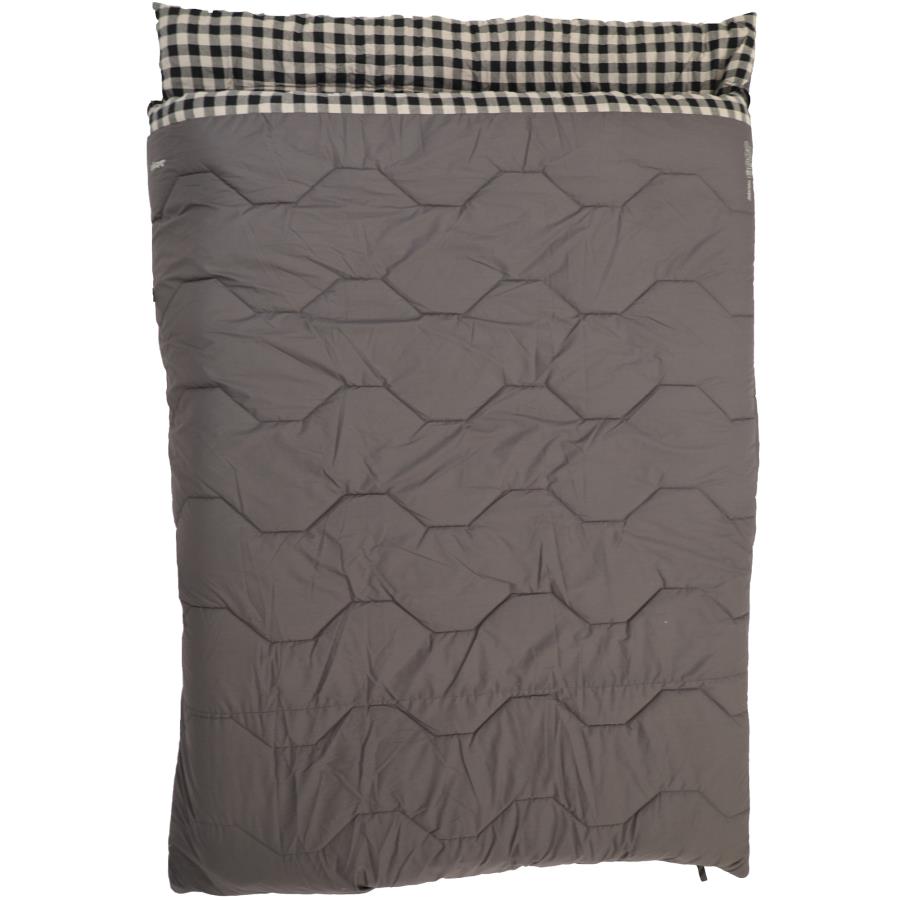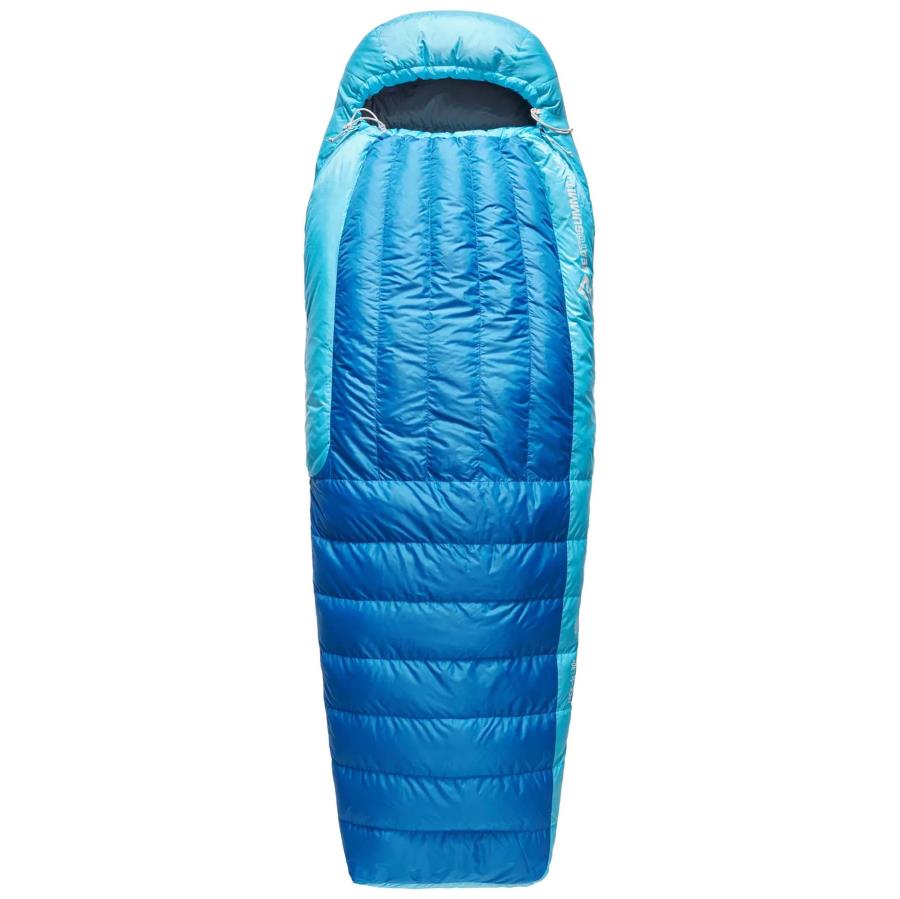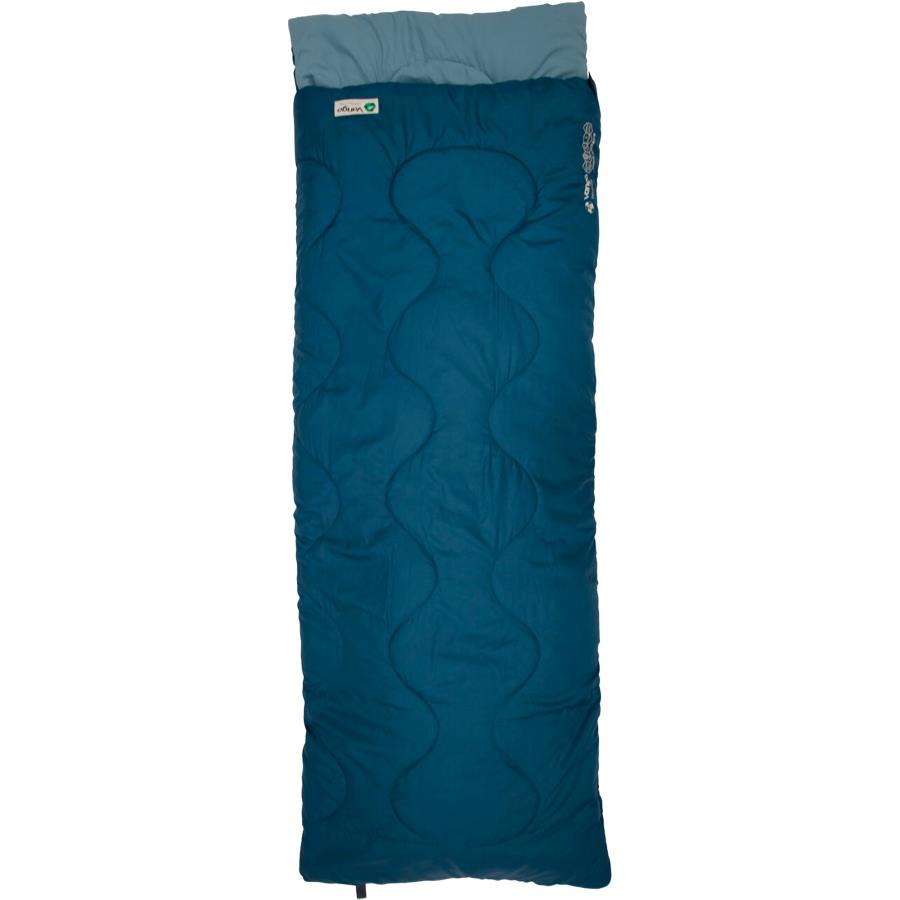The Absolute Guide to Buying Sleeping Bags

What should you look for in a Sleeping Bag? Firstly, it depends where you're going and when. Summer camping on the North Devon coast shouldn’t require a 4-season fully insulated bag, yet a lightweight 2-season bag probably won't be suited to a winter trip in the same location. In our opinion, it's safer to equip yourself for the lowest temperatures you could expect to encounter on your trip. Better to have a bag that’s too warm and not need it, than one that’s not warm enough when you do.
It's worth remembering that a good quality sleeping bag goes only so far in keeping you warm. In every case, they should be coupled with a suitable sleeping pad to insulate against ground temperature. And it’s never a bad idea to keep a spare pair of warm socks and a hat close to hand should the temperatures drop.
At Absolute-Snow we hope to help you find the perfect sleeping bag to suit your next adventure – summer or winter, big or small.

Sleeping bags work by retaining your body heat. The greater the level of insulation the more effective it will be in keeping you warm. The problem is everybody runs at a slightly different temperature. Variables such as body mass, gender, exercise and even recent food/alcohol intake can all play a part in determining core body temperature at time of rest. So how do you make an informed choice?
In 2005, the European advisory formed a legal standard to help regulate temperature ratings across the industry with the aim of better guiding consumers. The resulting standard - EN13537 – provides four different temperature ratings: Upper Limit, Comfort, Lower Limit and Extreme.
Again, with so many variables to consider these ratings should be taken as an indication of a bag’s effectiveness rather than a concrete rule. But taken across the broad range of products available they do help in comparing models.
This is the temperature at which a standard* male can sleep without excessive perspiration. This limit is established with the bag’s hood and zippers open and with the arms outside of the bag.
This is the temperature at which a standard* female can expect to sleep comfortably in a relaxed position.
This is the temperature at which a standard male can sleep for eight hours in a curled position without waking.
This is the minimum temperature at which a standard female can remain for six hours without risk of death from hypothermia (though frostbite is still possible).
NB. These ratings are taken assuming that the subject is using a sleeping pad, tent and is wearing one base layer of thermal underwear.
*A "standard man" is assumed to be 25 years old, with a height of 1.73 m and weight of 73 kg. A "standard woman" is assumed to be 25 years old, with height of 1.60 m and weight of 60 kg.
It should be understood that the ‘extreme limit’ is considered the very edge at which a person could survive and not an indication of the ‘in use’ range. Again, it’s well worth checking the temperature extremes you can expect to encounter before making your decision. Time spent researching your destination before you leave is far better than time spent shivering in a poorly insulated sleeping bag or worse.
Ever wonder how ducks stay warm in winter? They mostly go someplace warm – the upside of having wings. But for those of us with only our passports and a limited budget to see us through the winter we’re left to rely on other methods of insulation.
Broadly speaking, insulation falls into two categories: synthetic and natural. Each has their own distinct benefits with the location, climate, and mode of transport all playing a role in deciding which type would benefit you the most.


Down feathers – or rather the layer of plumage found beneath a goose or duck’s more robust exterior feathers – offer an incredibly fine, soft fibre with a loose structure that traps air. Higher quality down carries more ‘loft’, meaning it can trap and warm more air providing better insulation.
For this reason, duck and goose down give you a far greater warmth-to-weight ratio than synthetic fibres which are denser. Down’s looser and lighter structure can also be compressed making it ideal for low bulk, lightweight trail bags. If stored correctly (see more below) natural down can last up to 3 times longer than synthetic counterparts.
There are some downsides. Most good quality bags feature a water-resistant shell to ward off light moisture and condensation. Though should you find yourself in a situation where your down bag becomes wet those high loft fibres will quickly clump together at which point they lose the ability to hold heat. Newer technology exists that increases down’s efficiency by adding a water-resistant ‘dry’ treatment. This treatment allows down to retain a higher degree of its loft in damp or humid conditions. Always check the specifications before making a decision.
As with anything of great quality, there’s a price tag attached. Expect to pay more for a natural down bag over a synthetic equivalent; though again, down can last a great deal longer than synthetic fibres making them cost-effective in the long run.
Click this link to view all of our Down Insulated sleeping bags.
Synthetic fibres (polyfibres such as spiral, micro or hollow) offer a manmade alternative to natural down and go some way to remedy the issues of water-resistance. Synthetic fibres absorb less moisture than down allowing them to retain their insulating properties even when wet and subsequently dry faster. A growing number of water-repellent treatments boost this protection to bring an increasingly versatile range of sleeping bags onto the market. The fibres essentially become hydrophobic, repelling water without clumping together and continuing to provide warmth even in damp or humid conditions and climates. They’re also less expensive than down bags, require less maintenance (easier to clean), and dry faster should they become wet.
Again, they’re not without their cons. Synthetic fibres hold less heat than their similarly weighted down counterparts and their denser structure makes them heavier with a bulkier pack size. While they are cheaper they don’t last as long as their natural down counterparts.
Click this link to view all of our Synthetic Insulated sleeping bags.


The blending can vary between brands, but some companies use a combination of down and synthetic insulation to offer both the lower weight and high loft of down, with the water resistance of synthetic. Some brands replace the down on the bag's underside (which would otherwise be crushed by bodyweight) with synthetic fill to help boost warmth.
Click this link to view all of our Hybrid Insulated sleeping bags.

The quality of down differs depending on the source with goose providing a higher quality down than duck. This quality is measured by ‘fill power’ with the higher the fill power the more volume the down fills per ounce. Higher fill powers generate more ‘loft’ – or roughly the down’s ability to trap air and provide effective insulation. Greater loft gives you more pockets in which to trap air. Trapped air is subsequently warmed by your body heat which in turn creates a barrier of warmth between you and the lower temps outside the bag. Consequently, the warmer you are getting into a down bag the warmer the bag will be.
Fill power is measured by placing an ounce of down in a graduated cylinder which is then compressed with a small weight from the top. After a set period of time, the volume below the weight is measured. The resulting measurement determines the down’s fill power, i.e. one ounce of 600fp down was compressed to a lower volume (600 cubic inches) than one ounce of 800fp down (800 cubic inches). Conversely, a higher fill power is not necessarily warmer than a lower one. You’ll see sleeping bags of 600fp and 800fp rated to the same temperatures. All it means is that 800fp bag achieved the same level of effective insulation with less down weight than the 600fp bag. For you, this means the 800fp bag is lighter with a smaller pack size – better for hiking with. Though perhaps a little heavier on the pocket…

A brief rundown of some of the more familiar terms and constructions.
In general, there are two types of bag shape: standard rectangular or ‘duvet’ style bags/tapered ‘Mummy’ bags.
The classic rectangular design is great for 1-2 season camping in mild to moderate conditions. The flat shape means more space around your body which insulates less so be wary of using these in colder weather. These types are great for family camping, festival or indoor use. Great bags for casual trips – often with a full zip that opens them up so they can be used as a blanket. Given their size and shape most duvet style bags don’t feature a stuff sack and are simply rolled up when not in use meaning they don’t compress as much as tapered bags.
See all of our Duvet Style sleeping bags.


A more modern design, but no less recognisable, is the mummy bag. The tapered design varies between brands but the principle remains the same with the fitted design offering a closer ‘snug’ fit for greater heat retention. Most mummy bags feature full body protection with a hood. If you’re expecting lower temperatures or wet conditions then a mummy bag is the way to go. The vast majority of mummy bags feature stuff sacks or compression sacks making them ideal for foot travel where pack size is an issue.
See all of our Mummy/Tapered sleeping bags.

Baffling refers to the construction. In down bags baffles are the ‘ribs’ running around the bag. Their purpose is to compartmentalise the down fibres. This holds them in place and promotes an even weight distribution throughout the sleeping bag. Without them down would tend to clump and/or migrate with use, particularly on the bag’s bottom that absorbs the most pressure.
This refers to a piece of insulation fixed behind the length of the zipper that prevents heat loss/cold air through the zip teeth.


It’s all about keeping the heat in. Draft collars (otherwise known as neck or shoulder baffles) do much the same thing as zip baffles. This insulated collar wraps the neck and shoulder area to guard against heat loss. Your best friend on a cold night.
For those looking for a little extra comfort, the foot box design on some models offers extra room for your feet.

If care is taken, your down sleeping bag or garments can retain their loft for up to three times longer than their synthetic equivalent. One way to extend the lifetime of your down bag is to store it outside of its stuff sack by either hanging it up (most good bags feature hang tabs) or placing it in a larger bag or pillowcase where it’s less compressed. If hanging by other means then make sure not to create ‘dead-spots’ from a hanger or through bunching. The idea is to keep the down from spending long periods of time in a compressed state.
If your down bag gets wet be sure to dry it thoroughly before storage. Wet or damp down will clump and become ineffective. Worse still it will allow mildew and odours to form leaving you with the equivalent of crawling into a donkey’s sock at the end of a hard day’s trek.
In order to maintain and maximise down’s effectiveness, it’s a good idea to keep it clean. There are a range of down cleaners that will gently remove the build-up of oils and dirt and help restore the natural loft and breathability. For best results always refer to the manufacturer's guidelines before cleaning by hand or machine.
Explore our latest sleeping bags
Check out our full range of Sleeping Bags today!
Need further advice? We're here to help!
Visit our Help Centre to speak to our experts.

